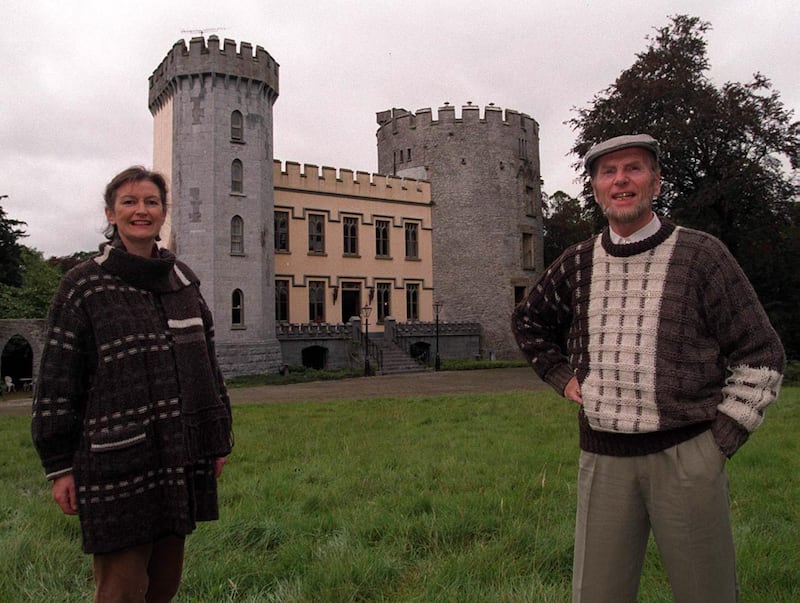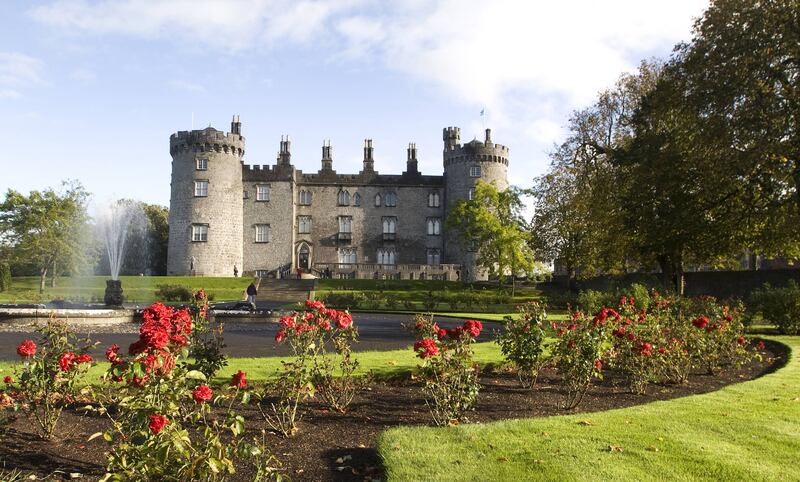Everybody has heard of the Wild Atlantic Way and now the Ancient East, but not many think of the quiet roads and peaceful villages of our country’s centre, where time really does seem to have stood still.
If you’re looking for a holiday away from it all, where taking things slowly is a way of life and the old traditions still linger, then you can’t do better than head right up the middle of Ireland, leaving the crowded coasts to others and discovering some wonderful places that will be yours alone.
From Cork up through Tipperary, Offaly, Westmeath, Longford to Leitrim, there are a multitude of choices depending on taste and inclination. Follow the course of the Shannon through Lough Derg, Lough Ree and Lough Allen, right to its source at the Shannon Pot in Co Cavan.
Explore the great Bog of Allen with its myriad of wild flowers. Veer off to the left or right as fancy takes you, and discover somewhere new.
READ MORE
Visit medieval Farney Castle near Holycross in Tipperary and delve into the past. First built in 1185, the present structure was the work of Thomas Butler, 7th Earl of Ormond, in 1495.

It was designed as part of a strong defensive system created by the Butlers to protect their land in Tipperary from the native Irish who, probably quite justifiably, resented their presence.
Farney has the distinction of the only round tower in Ireland which is occupied as a family home. Owner Cyril Cullen began a long and illustrious career as a fashion knitwear designer back in the 1960s (Terry Wogan proudly wore one of his Aran sweaters!) and still has a keen interest in this work today, along with the creation of fine porcelain.
It’s not far from Farney to Holycross Abbey, a medieval Cistercian monastery on the banks of the river Suir. Pilgrims travelled here for more than eight centuries to see and venerate a relic said to be a piece of the True Cross. It has some splendid stonework and one of the only surviving wall paintings in Ireland.
Brian Boru made Lough Derg his principal seat before he became high king, and you can explore his fort by Killaloe, although it is now no more than a hollow in the woods, surrounded by trees.
Mountshannon, further up the lake, has a popular bathing place, and boat trips can be taken to nearby Inis Cealtra or Holy Island.
At Birr there are the grounds and gardens of the castle to see, home of the Earls of Rosse, with its world famous and enormous telescope, built by the third earl in the 19th century.

Or swing eastward for Kilkenny, a city that was very definitely created around its castle – overlooking the river Nore and its vital crossing point – over 900 years ago by the powerful Butlers of Ormond.
As recently as 1967 the 24th earl, Arthur Butler, sold Kilkenny Castle to the town for the princely sum of €50, only stipulating that the ground in front should always remain open and unbuilt upon so that everyone could enjoy it to the full.
It’s still a gracious grey place, Kilkenny, full of medieval atmosphere, with narrow cobbled laneways leading to intriguing old buildings that don’t seem to have changed in centuries, and ancient swinging signs over dark doorways.
Don’t miss the Tholsel (toll hall), or the Butter Slip, both echoes of the medieval past. The Kyteler Inn is a tragic reminder of Ireland’s only recorded witch burning: one Alice Kyteler was accused of witchcraft (by the English colonial powers, not by the Irish who were always protective of their wise women). She managed to escape, but her hapless servant, Petronilla, paid the price instead. It is said that both women can still be glimpsed on dark nights, hastening out of sight down alleyways, their cloaks billowing as they disappear.
You just might see them on one of the ghost tours offered. Or browse the craft shops: Kilkenny has a well-deserved reputation for promoting all kinds of traditional handwork and other artistic pursuits.
Wherever you are travelling through the midlands you will at some point cross the routes of the Grand and the Royal Canal which linked Dublin to the west coast over 200 years ago. Many little quaysides and locks have been lovingly restored and where loaded barges once floated by, now gaily-painted little pleasure craft tie up.
Tullamore was for some years the terminus for the Grand Canal, while the company argued for the best route to take on to the Shannon, and it now boasts a splendid local history and heritage centre, as well as being the home of Tullamore Dew.
At the foot of Lough Ree stop for a break at the oldest pub in Ireland (and possibly in the entire world) at Athlone or Ath Luain. The Irish name commemorates a crossing of the river managed by one Luain back in ancient times. He would guide travellers across safely (presumably receiving payment for his services) and inevitably little shops and stalls opened up around the ford, as well as his own hostelry which he kept for the refreshment of those journeying on to east or west. And it’s still there on the quayside in Athlone, although now it is known as Sean’s Bar. You can see some of the ancient lath and plaster structure preserved inside. Boy George is said to have owned it, albeit briefly!
The terminus of the Grand Canal is at Shannon Harbour where the ruins of a wonderful old hotel still stand, its surrounding stables and yards now overgrown and impassable. In its day it saw thousands of canal passengers pass by or climb its stately steps to avail of a comfortable night’s sleep. Now it looks serenely down on holidaymakers happily messing about in boats, and keeps its memories to itself.

A little upriver from Shannon Harbour stands ancient Clonmacnoise, long a site of monastic devotion. It is peaceful today, but in its time it was sacked constantly by those seeking to snatch its riches.
Contrary to general belief, though, these raids were rarely by the Vikings – the English and even the Irish themselves account for most of them. It does tend to happen when you choose a site so conveniently placed at the edge of a huge navigable river, which is also a crossing point on the Esker Riada – the natural hard ridge of rock which leads from the east to the west coast.
North again, the Shannon forms a natural border between Roscommon to the west and Longford to the east, before reaching Carrick-on-Shannon in Leitrim, a lively boating centre, and close by Lough Key Forest Park. Coillte’s flagship visitor destination for fun activities, it’s the perfect place for kids to use up their surplus energy while adults enjoy gentler strolls in forest or on lakeshore, in what was once the historic Rockingham estate.
There is an innocent little humpbacked bridge between Blacklion in Leitrim and Belcoo in Fermanagh which marks not just a river crossing but a division between countries. Here there is a well restored railway station, once part of the Sligo-Leitrim Line, where, when trains became unavailable in wartime, they actually ran buses on the tracks.
There is a wonderful story around the outbreak of war here: a circus was passing through from Fermanagh to Leitrim but was stopped at the bridge by English guards who wanted to intern the whole company under wartime regulations.
Somehow they managed to get all their vans across into the Republic, whereupon in delight they gave an impromptu performance right there in the main street of Blacklion.
One of the brighter moments of the time, and worth celebrating even now. You never know what you will discover next in our magical hidden midlands. Make this the year you find out.















